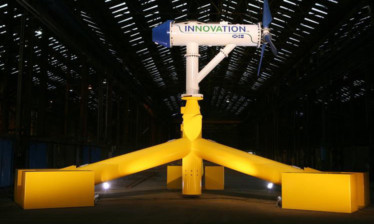The world’s first community-owned tidal power turbine has started exporting electricity to the grid, Energy Minister Fergus Ewing will announce today.
The small-scale turbine, which sits on the seabed at a depth of 100ft, will power up to 30 homes, an ice plant and the Cullivoe Harbour Industrial Estate on North Yell, Shetland.
Its propeller is spun by the tide as it ebbs and flows, driving a generator which in turn produces electricity for transmission to shore via a 1km subsea cable.
Developed by Leith-based tidal energy company Nova Innovation in partnership with North Yell Development Council, the project has been funded by the Scottish Government, Shetland Islands Council and North Yell Development Council.
During his appearance at the All Energy conference, Mr Ewing is expected to say Scotland must follow Yell’s lead to tackle climate change by harnessing the power of the sea.
“Scotland is recognised as world leader in wave and tidal energy, with a quarter of Europe’s tidal stream and a tenth of its wave-energy potential,” he will say.
Seonaid Vass director of renewables and low-carbon technologies at Scottish Enterprise, which has worked alongside Nova said Scotland was testing more wave and tidal devices than anywhere else in the world.
“The successful deployment of this device is an important step in the development of technologies in the tidal industry, and we look forward to continuing to work with the company to supports its growth plans,” she added.
Meanwhile, officials from six EU countries met in Aberdeen yesterday as part of a project designed to coordinate marine renewable energy in the Atlantic.
The latest seminar was the penultimate meeting in a programme which will result in the signing of Atlantic Power Cluster Accord a working agreement to work collaboratively and share resources by 17 regions across 15 regions of Ireland, France, Spain, Portugal and the UK.
